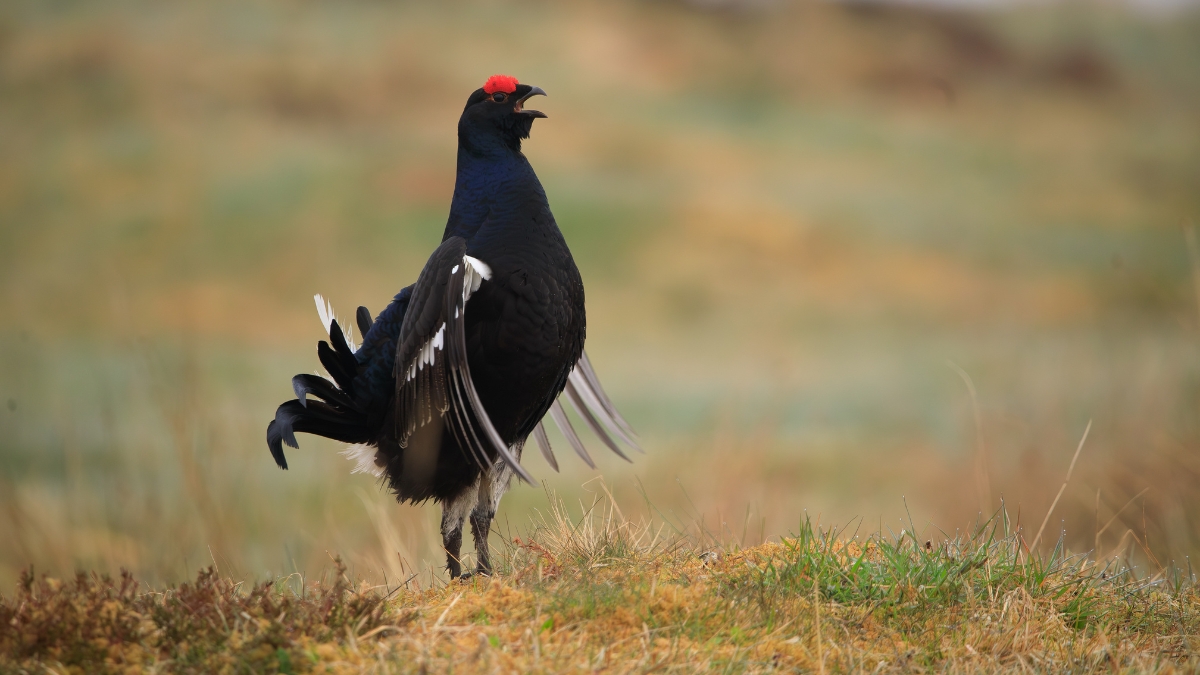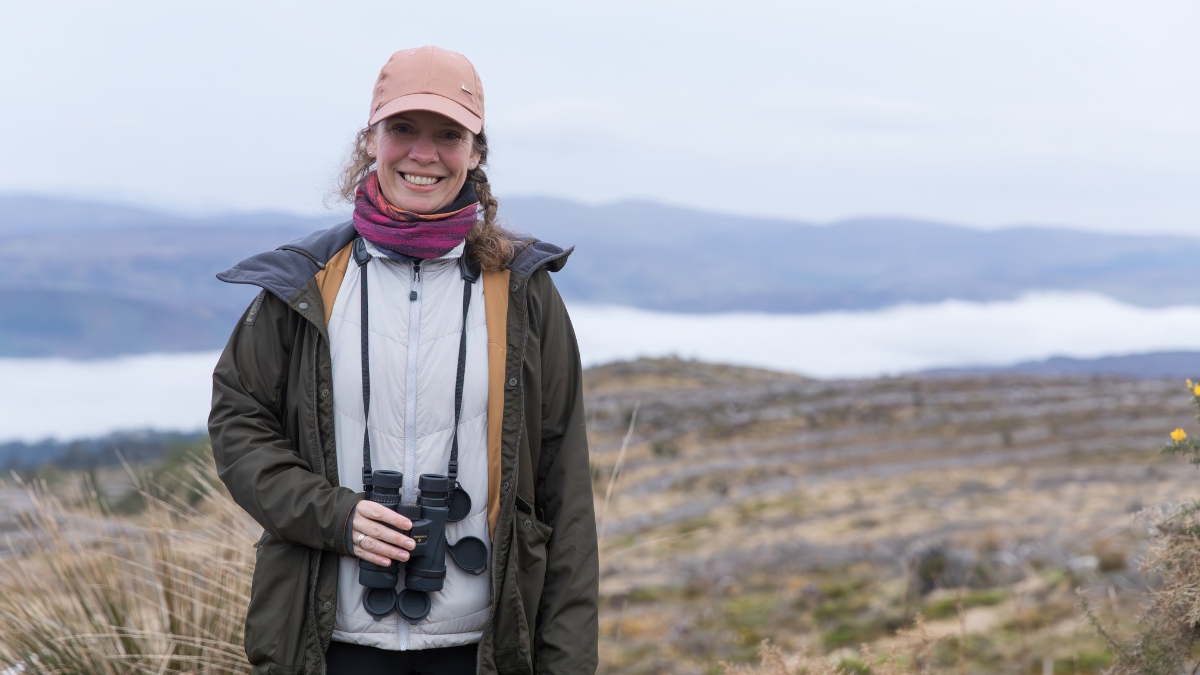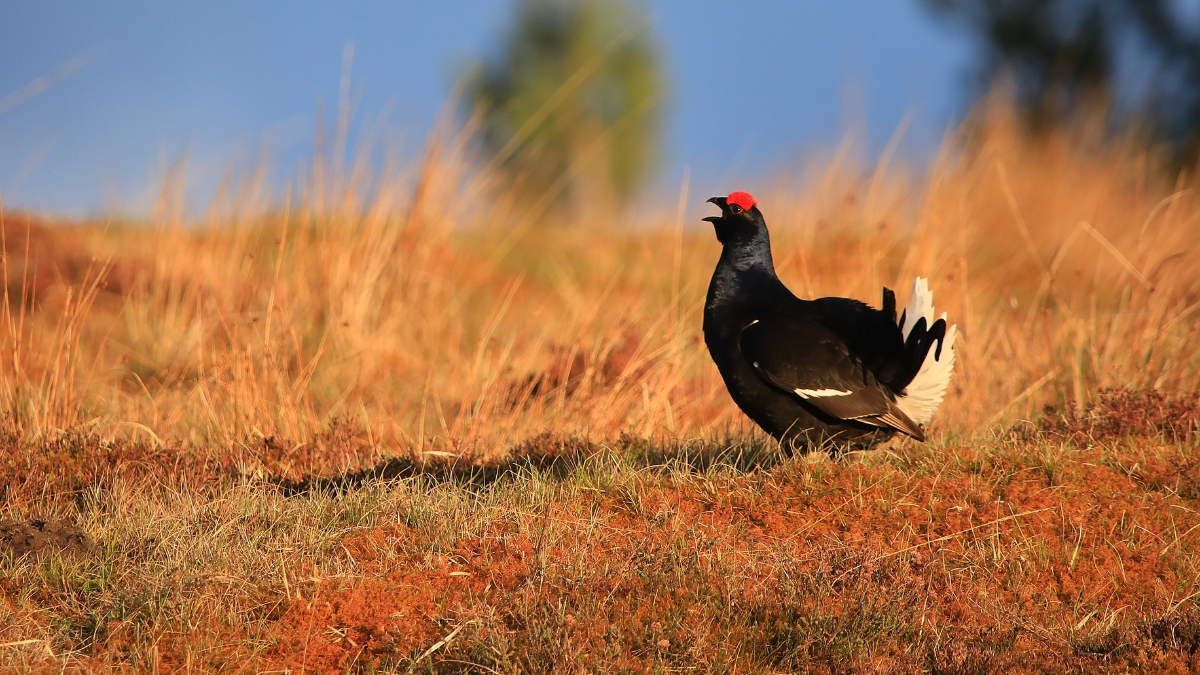Highland black grouse numbers on rise thanks to habitat restoration
Habitat restoration is creating an upwards trend in black grouse numbers in the Highlands – offering hope for the endangered birds and for wider biodiversity, a study has found.
The first year of a new citizen science study in the Affric Highlands rewilding landscape near Inverness has found black grouse populations are recovering well at sites carrying out large-scale nature recovery, including restoration of native woods, peatlands and wetlands.
Black grouse are an important indicator species for ecosystem health, and use a wide variety of habitats for feeding, shelter, nesting, lekking and rearing chicks.
But the spectacular birds have suffered long-term UK-wide decline, due to threats such as habitat loss and intensive land management. They are now locally extinct in many regions, with surviving populations often badly fragmented.
A new community-focused programme of black grouse surveys has been launched this year by the Affric Highlands initiative and RSPB Scotland, working together with Forestry and Land Scotland (FLS) and local landowners. The project builds on previous surveys by RSPB Scotland in the area since 2007, and includes a team of volunteers for the first time.
“Our initial findings are a cause for optimism. Restoring a mosaic of habitats to health appears to be offering much-needed hope for black grouse numbers – and so for nature more broadly,” said Nicola Williamson, Field Officer for Affric Highlands.
“The project has been a constant source of inspiration – including the positive engagement of the local community and landowners, the nature recovery action underway at several estates, and the amazing team of volunteers who have made the study possible.”
Black grouse populations are measured by counting numbers of males attending mating display sites called leks. Between April and May 2024, 14 sites in the Beauly area were assessed, with trained volunteers studying five square kilometre plots.
The study recorded 405 lekking males – a slight increase since the last survey in 2021, and the highest recorded over the past 17 years. In 2007, 250 lekking males were counted.
With black grouse numbers fluctuating over time, and data lacking for some past years, the project aims to confirm through future surveys whether the overall rise is steady.
The team also found that numbers of lekking black grouse males have risen or declined – sometimes significantly – at different individual sites due to changes in available habitat.



Nature restoration appears to be the key factor at sites where numbers are up. Excluding herbivores such as deer to reduce overgrazing and over-browsing, for example, is allowing habitats to bounce back through the growth of healthy shrub layers and young trees.
Study sites included RSPB’s Corrimony Nature Reserve, several FLS sites including one in Glen Affric, and Trees for Life’s Dundreggan estate in Glenmoriston, alongside private farms and estates such as Corrimony Farm and Guisachan.
“The encouraging survey data provides welcome recognition of people’s hard work, and shows what can be achieved in a relatively short time. It’s also helpful for us to be able to see a bigger picture in the context of neighbouring land,” said Alex Grigg of Guisachan, which has been taking action for black grouse for several years and is an active partner in Affric Highlands.
The findings are already leading some landowners to adopt more nature-positive management approaches. At several sites where black grouse populations have gone down, landowners are actively seeking advice and support to increase grouse numbers.
Simon McLaughlin, RSPB Site Manager, said: “The support from local volunteers, estates and other organisations this year has inspired optimism that these birds will be well looked after into the future. We hope we will see even more of this community involvement going forward and to continue working together to implement measures to safeguard this amazing species.”
The black grouse is one of the UK’s most rapidly declining bird species, and on the ‘Red’ list of conservation concern. It needs a mosaic of habitats including woodlands and moorlands.
A fresh UK-wide survey of black grouse is long overdue. The last, in 2005, estimated the UK population to be 5,100 males – with 3,400 in Scotland, 1,500 in England and 200 in Wales.
Affric Highlands is the UK’s largest rewilding landscape, led by Trees for Life and Rewilding Europe. The 30-year community-focused initiative aims to restore habitats over half a million acres from Loch Ness to the west coast – tackling the nature and climate emergencies, and supporting re-peopling and nature-based economic opportunities.
Training begins this autumn for next year’s season of black grouse surveys. The project team is keen to hear from potential volunteers and more landowners interested in getting involved. Email info@affrichighlands.com or visit the Affric Highlands webpage here.

